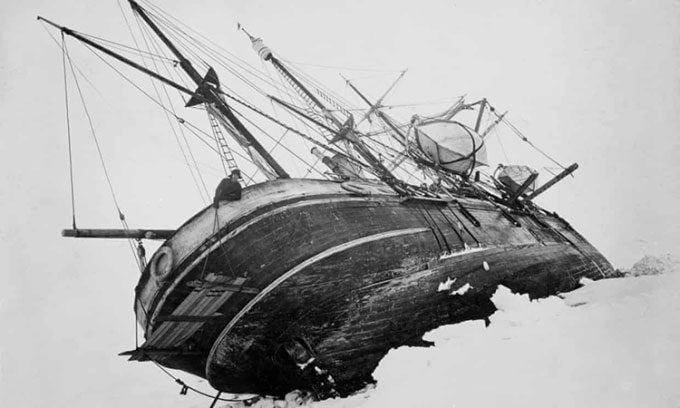The famous wreck of the Endurance, which sank over 100 years ago, will deteriorate if not salvaged, but this process is very complex and time-consuming.
Endurance, the renowned ship of explorer Ernest Shackleton, is set to degrade and vanish beneath the icy waters of the Southern Ocean if it is not salvaged and preserved, according to a report by the Guardian on October 7. Mensun Bound, the archaeologist who discovered the wreck in March, stated that the question of whether it should be salvaged from the frigid waters is contentious and leads to a host of legal and logistical issues.

The Endurance broke apart and sank in the Weddell Sea in Antarctica in 1915. (Photo: Royal Geographic Society/PA)
“There are many opposing views on the salvage of the ship. We have a lot of ideas about this issue, and we must also consider the Shackleton family, who may very well own the ship. They have quite strong opinions on this matter,” Bound stated.
“When salvaging the ship, we need to think about the preservation process and which museum will be responsible for it. This process could take a considerable amount of time. However, if we leave the ship on the seabed, it is organic material and will eventually decompose,” he added.
The Endurance 22 search team, led by Bound, located the Endurance at a depth of approximately 3,000 meters, about 6.5 kilometers south of the position recorded by the ship’s captain, Frank Worsley. Shortly after the Endurance was found, explorer Alexandra Shackleton’s granddaughter expressed a desire to keep it in its original location.
In 1914, Shackleton and his crew embarked on an expedition to Antarctica. However, the Endurance never reached land and became trapped in dense pack ice, forcing 28 men to abandon the ship. The vessel broke apart and sank in the Weddell Sea on November 21, 1915. The crew was stranded on the ice for 10 months before escaping by using lifeboats and walking.
Bound plans to study the wreck in more detail. He shared that this is the best-preserved wooden shipwreck he has ever seen. “We are concerned about the time needed to conduct a full biological survey because the ship is like an incredible oasis in the vast plain,” he remarked.





















































